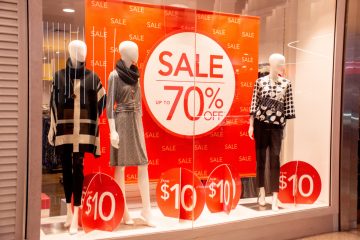How to Combat Hyperchoice by Offering a Curated In-Store Experience

Let’s admit it, we’ve all done it. We browse an online store, moving items that grab our attention to the basket or wish list, even though we don’t intend to buy them now. Maybe, we want to research the items further, read some reviews or check another site for the same or similar items to see if we can get a better deal.
The items then sit in the basket for weeks or months, and when we next revisit the site, we find the price of some of the saved items has changed or the items have been discontinued, so we lose interest in completing the sale.
The average eCommerce store loses over 75% of its sales to cart abandonment and one of the top three reasons is consumers conducting research for items they plan to buy later but then decide not to.
Of course, for consumers it’s great to have the tools to research products before buying them, but the drawback is that the research process gets extended ad infinitum.
A recent study showed that a third of consumers looked at an item three or more times before making a purchase, and 87% compared what they find on a brand or retailer’s site to Amazon’s inventory. According to the study, too many product options – or hyperchoice — stop 46% of online shoppers from completing a purchase.
So what can retailers do to combat the hyperchoice hesitation that stops shoppers from making a purchase?
The real solution is in-store
Brick-and-mortar retailers have a big advantage in this respect. They may not be able to complete with Amazon in terms of the width or depth of their assortments, but shoppers come into the store for something else.
Retailers can offer a more curated in-store experience with knowledgeable staff advising in-store shoppers. Retailers can drive interest and, ultimately sales by a smart downsizing of choices while putting more emphasis on experience-driven commerce.
A POS solution like Openbravo helps retailers get over their hyperchoice anxiety with clienteling capabilities available at the POS. Once the customer is in the customer data management system, the sales assistant can look up a customer card at the POS and view the customer’s activities. At the same time, they can look up product information and attributes which can be filtered according to customer preferences.
Sales assistants become the expert that the customer can trust. In addition to product recommendations which appear as cross-selling options, they can also offer relevant promotions and loyalty incentives, which could be the push the customer needs to make the purchase.
Want to learn more about how clienteling capabilities can help associates assist customers overwhelmed by hyperchoice ? Watch our webinar, How to choose your next POS for omnichannel success or download the presentation here.




No Comment